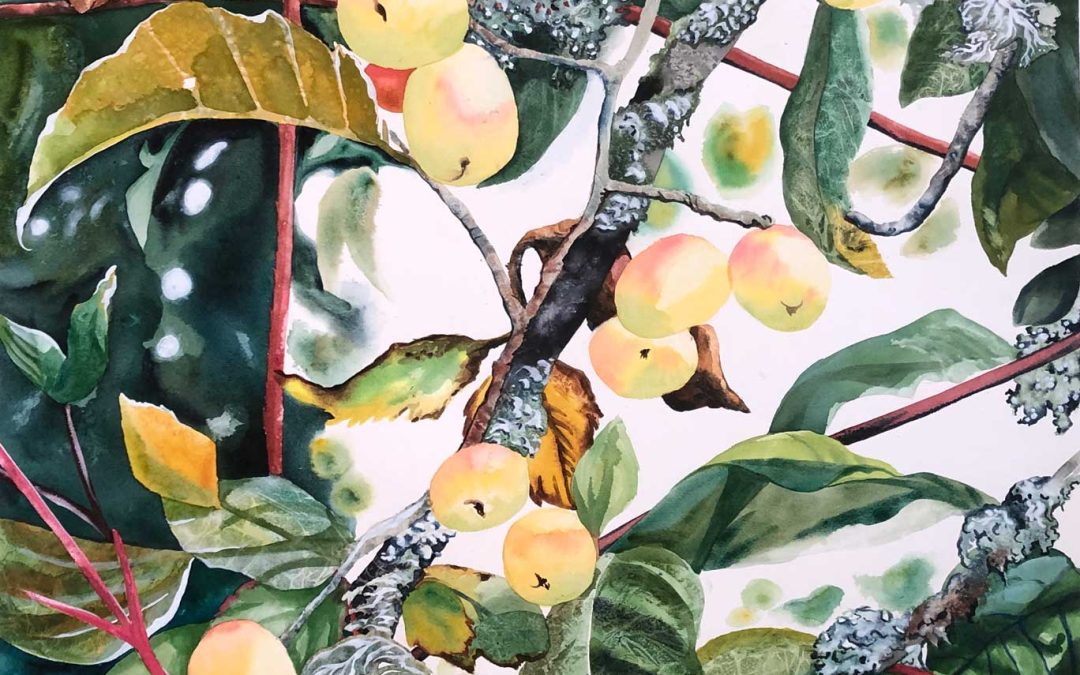Noticing the Unnoticed
I’ve loved the natural world of Vancouver Island my entire life. Growing up on the west coast has afforded me ample time and a diversity of places to explore. Yet, it was my year living in Japan in my late teens that profoundly influenced my approach to watercolour and composition. During that pivotal year, I immersed myself in several traditional Japanese arts, including calligraphy (shodo) and flower arranging (ikebana), which now significantly inform my art practice.
I’m not certain about the current state in Japan, but at that time, almost every student participated in an after-school club. I chose calligraphy, partly because practicing Japanese characters aided in learning the language and partly because it involved using a brush. The Japanese brush is a remarkable tool capable of transforming pigment into a vibrant line, each stroke reflecting the user’s hand’s weight and movement and the brush’s saturation. Mastering this art requires time, and artists have dedicated centuries to it. For me, the nine months of study as a beginner provided a foundation for a lifetime of practice in my later painting career.
Japanese flower arranging, another art form deceptively simple yet practiced for centuries by both men and women, embodies the essence of complexity simplified. Its approach starkly contrasts with Western practices. In a traditional Japanese household, a flower arrangement serves as a meditative focal point in a main room, unlike in the West, where arrangements are primarily decorative. The crucial lesson I learned is that Japanese arrangements rely on asymmetric symmetry and natural elegance, often comprising 3, 5, 7, or 9 stems, with ample space between each branch or flower. Each stem is carefully considered for its beauty and line, placed precisely in relation to the others, without anything superfluous added. Thus, when I begin a painting, I start with an engaging line and then find two more significant lines to compose around.
Studying ikebana also instilled in me a lasting appreciation for the details of all plants and the ever-changing light in nature. This appreciation is evident in my oversized watercolours, where the forms are magnified and depicted in great detail. I remain forever fascinated by the beautiful forms, seasonal changes, and characteristic lines of each species, from wild blackberries and roses to Arbutus limbs and Cedar boughs. Now, back on the west coast, I continue to embrace a contemplative way of looking and painting that began during that significant chapter of my life. And I believe that no matter where we are, anyone is capable of pausing to notice the unnoticed.

